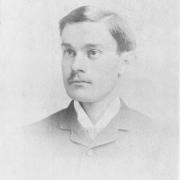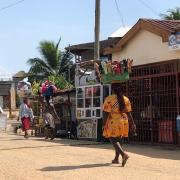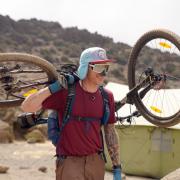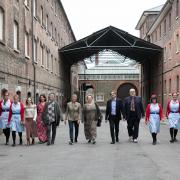Adam Hemsley was only 22 when he realised his dream of opening his own zoo. Here’s how he turned an unused piece of land in Fairseat into the Hemsley Conservation Centre

While others his age were just leaving university and getting their first jobs, 22-year-old Adam Hemsley was busy opening his own zoo.
The Meopham resident had already worked and volunteered in several zoos, as well as gaining a degree in animal management from Hadlow College, when his father made him an offer.
Having already financially helped Adam’s sister to get a foot on the property ladder, he gave him the same chance.
“I said no, however,” says Adam, now the ripe old age of 25 and the owner and director of Hemsley Conservation Centre in Fairseat. “I asked if I could have the money to open my own zoo with instead.”

It took a great deal of convincing but eventually Adam’s dad agreed to help his son get his business off the ground. Early in 2015, Adam signed on the dotted line and gained access to his site for the first time.
“There was nothing here at all. The bit of land that we started on was just crushed-up Tarmac that had been dumped here. We started in the January, got planning permission and opened in the August.”
Adam’s land was missing a few vital things for a zoo; primarily utilities, enclosures and any sort of buildings. He had to bring water, drainage, telephones and power in, and ordered several flat-packed buildings to be installed. Doing as much of the work himself as possible, he roped in help from friends and family. Even his grandparents played a part in building the centre from the ground up.
“I got quite a few friends from university to come along and dig trenches for pipes,” he laughs.
Incredibly, the centre was up and running in just a few months. Having taken a while to gain a reputation, it’s now an established visitor attraction, with a range of mammal residents – including lemurs, meerkats, porcupines and a slow loris – as well as all sorts of reptiles, birds, amphibians, fish and creepy crawlies.
The modestly sized centre has barely even advertised itself yet, instead relying on word of mouth and the power of social media. So how did all this start?
“I was about eight when I thought I’d have my own zoo,” says Adam. “I didn’t have any pets until I was about 14 but I’d always wanted a dog.
“Then I asked for two tortoises and my mum gave in. It just went from there really; I ended up with more and more reptiles and weird things.”
Adam, a former pupil at Gravesend Grammar School, left school at 16 to study for a diploma in animal management at Hadlow, which allowed him to take up a part-time job at an aquatics and reptile shop and also volunteer at London Zoo.
He stayed on at Hadlow to complete a degree, working part-time as a keeper at Paradise Wildlife Park in Hertfordshire.
After his degree he became an elephant keeper at Colchester Zoo, but even that wasn’t enough to keep Adam from his dream of having his own centre. He left at the end of 2014 and went straight to work on his plans.
“If you ask any zookeeper, they’re lying if they say they don’t want to open their own zoo. Not that I’d really recommend it, knowing what I know now!”
With both the qualification and the experience he’d gained, as well as a head for business and the support of his family and friends, Adam managed to turn the dream into reality.
“We started with tortoises and then our kinkajous and our porcupines turned up together; they were the first large mammals on the site.
“Other things started slowly trickling in. We even had a crocodile for a while, but she’s left us now.”
As a registered zoo, the centre has access to a massive database of animals in captivity across the world and sources from there.
“All our animals have their own profiles on the database. At the end of the day our keepers write notes about the animals and at the end of each week I look through and transfer any relevant information onto their profiles. If they ever leave us, all we have to do is press a button and all their notes go to the new keepers.
“On that software there’s also a surplus list. So, for whatever reason, animals are put up on there and then if a zoo is interested, they can get in touch.
“It can be because of changes in group dynamics, or because they need to move on some of last year’s babies. There are also breeding programmes, so some of our animals will go off to stud for a while.”
The zoo has to conform to strict rules, seeking approval for its moves and carefully managing introductions. None of the animals are bought but normally the receiving end pays for the transport.
Being a new zoo, Adam had to lay out a considerable sum to get up and running. The centre now has four members of staff, including Adam himself, and he admits that for him it’s a seven-day week. Volunteers and work experience helpers take up the remaining slack.
Some of the reptiles are particularly hard to care for, with complex feeding and housing needs, but the centre doesn’t yet have anything dangerous enough to warrant extreme caution.
“We chose to call ourselves a conservation centre mainly because we didn’t want people turning up expecting lions and tigers and bears. Although, we do have two venomous animals at present; a gila monster and a pygmy slow loris. The slow loris can secrete an oil from its armpits if it gets really stressed and then lick it. It turns into quite a nasty venom so you don’t want to get bitten.”
Of course, caring for these animals doesn’t come cheap. The business has to make money and Adam is proud to say it broke even more than a year ago, which exceeded his original plan.
A huge factor in its success has been the popular experience days it runs for both adults and children, which are often bought as gift vouchers for birthdays and Christmas presents.
Experiences on offer include up-close and personal visits with the meerkats, lemurs, porcupines and the kinkajous. The most popular are the junior zookeeper day for youngsters who don’t mind getting their hands dirty, and ‘meet the meerkats.’
With a focus on education and outreach, Adam and his small team also run popular school visits, teaching youngsters about animal care and conservation.
“It’s one of the things we have to do as part of our zoo licence so we do lots of school groups. We have those that come to us, including a home school group who are here regularly, we go out to school, nurseries and I do a lot of college and university talks.
“We’ve got a classroom here now so we’ve started doing practical student workshops. We get quite a lot of people from my old college.”
This year, Adam says, will be the year for babies. They’ve already had twin marmosets born in March and are hoping to successfully breed more. Their most unusual animals are probably the Brazilian porcupines – the only two of their species in the UK at the moment.
Rather than living on the ground, this type of porcupine hangs out in the trees and Adam is hoping to get two females to join them later this year.
“Our rarest residents are probably the Bali starlings and there’s only about 100 of them left in the wild. We’ve also got some Annam leaf turtles which are in the top 25 most endangered turtles in the world.
“We feel a huge responsibility to care for these animals and hope to keep the breeds alive.”
Plans are now on the table for an expansion and there’s even the seed of an idea in Adam’s mind to open a second centre. As a keeper, all he wants is what’s best for his animals, but he also has to make the business work financially –which means making sure the public keeps coming through the gates.
“If something needs something, whether it’s an animal needing to see a vet or something that needs fixing in one of the enclosures, then that’s the priority.
“We make sure it happens and then we just have to budget for the next month.
“I know times are changing and the word ‘zoo’ isn’t very popular anymore. Education is key, however, and there are several animals you can look at and say if it wasn’t for captive populations, they would be gone altogether.
“We’re not the kind of place where our animals are going to be released into the wild but we’re using them to teach people about endangered species.
“Even our meerkats have conservation value because we use them to teach people about other desert species.”
Short-term plans include a few new faces at the centre. “Next up we’re getting some smaller cats. We’ve already got rusty spotted cats and we’ve got Geoffroy’s cats turning up soon from Germany and clouded leopards too. The clouded leopards will probably be the biggest cat we have for a while. I’d quite like tigers though, eventually. We’ll have to see.”
Find out more
Crabtree Close, Fairseat TN15 7JL



























